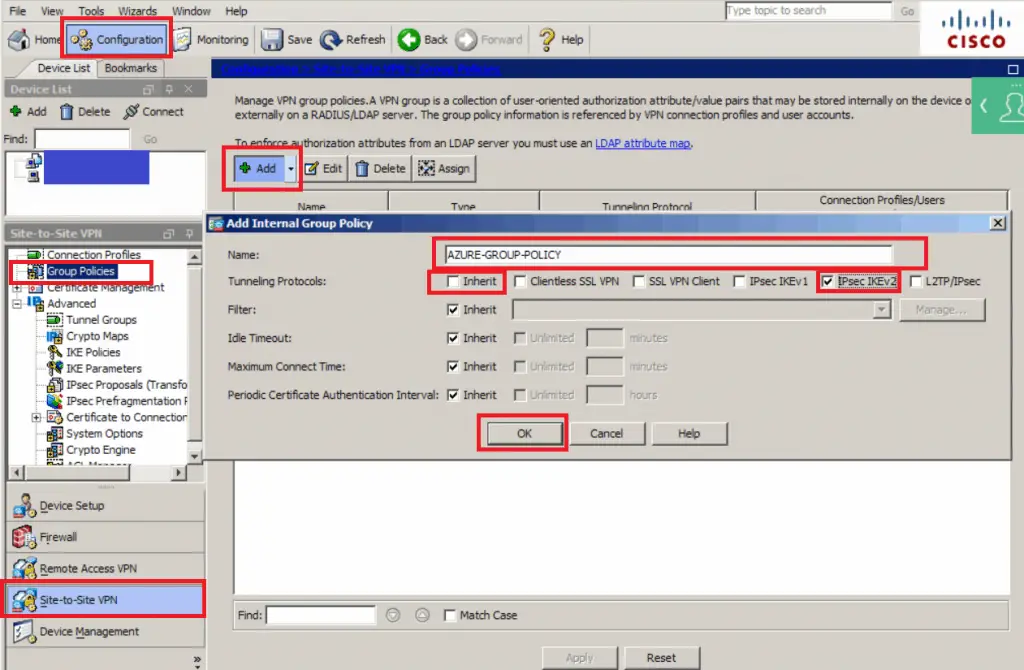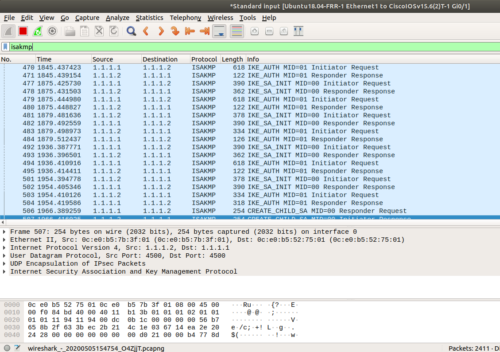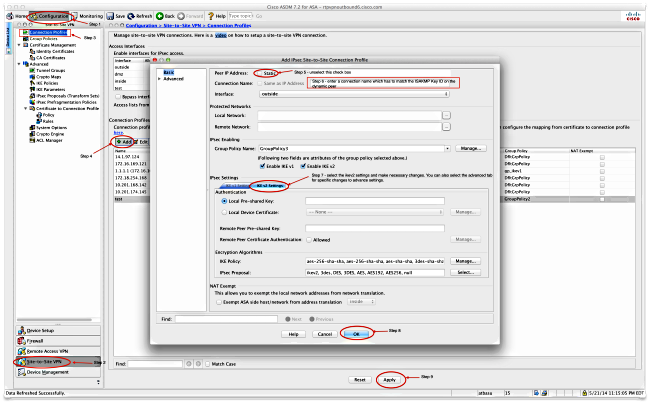

The IKEv2 RA server supports peer authentication using EAP and acts asĪ pass-through authenticator relaying EAP messages between the RA client and Please configure the query-identity argument in IKEv2 profile on IKEv2 RA server to send an EAP identity request to the client.
#Cisco ikev2 name mangler windows 7#
Use the Microsoft Certificate Server to obtain certificates for the Cisco IOS IKEv2 RA server and the Microsoft Windows 7 client for certificate-based authentication, because the Windows 7 client requires an Extended Key Usage field in the certificate that is not supported by the Cisco IOS Certificate Server.įor EAP authentication, Microsoft Windows 7 IKEv2 client expects an EAP identity request before any other EAP requests. On Microsoft Windows 7 and specify the email address string in either the user name field when prompted or the CommonName field in the certificate depending on the authentication method. To allow the Windows 7 IKEv2 client to send email address as IKE identity, apply the hotfix documented in KB675488 Microsoft Windows 7 IKEv2 client sends IP address as IKE identity that prevents Cisco IOS IKEv2 RA server from segregating remote users based on IKE identity. The IKEv2 remote access server interoperates with the Microsoft Windows7 IKEv2 client. The IKEv2 Remote Access (RA) server feature implements the IKEv2 RFC compliant remote access server and adds support for the following: Manually configured IKEv2 proposals must be linked with an IKEv2 policy otherwise, the proposals are not used in the negotiation. IKEv2 proposals are named and not numbered during the configuration. Though the crypto ikev2 proposal command looks similar to the IKEv1 crypto isakmp policycommand, the IKEv2 proposal configuration supports specifying multiple options for each transform type. Unlike IKEv1, the authentication method and SA lifetime are not negotiable in IKEv2, and they cannot be configured in the IKEv2 proposal. When multiple transforms are configured for a transform type, the order of priority is from left to right. Multiple transforms can be configured and proposed by the initiator for encryption, integrity, and group, of which one transform is selected by the responder.

The PRF algorithm is the same as the integrity algorithm, and hence, it is not configured separately. You must configure at least one encryption algorithm, one integrity algorithm, and one DH group for the proposal to be considered incomplete. The transform types used in the negotiation are as follows: Feature Information for Internet Key Exchange Version 2Īn IKEv2 proposal is a collection of transforms used in the negotiation of IKE SAs as part of the IKE_SA_INIT exchange.Example Configuring IKEv2 on DMVPN Networks.Example Configuring Crypto Map- and dVTI-Based IKEv2 Peers.Example Configuring IPsec Using sVTI-Based IKEv2 Peers.Example Configuring Crypto-Map-Based IKEv2 Peers Using Preshared Key Authentication Method.

#Cisco ikev2 name mangler how to#
How to Configure Internet Key Exchange Version 2.IKEv2 RA Server Support for IPv4 Configuration Attributes.Peer Authentication Using Extensible Authentication Protocol (EAP).Cisco IOS Suite-B Support for IKEv2 Proposal.Information About Internet Key Exchange Version 2.Restrictions for Configuring Internet Key Exchange Version 2.Prerequisites for Configuring Internet Key Exchange Version 2.Configuring Internet Key Exchange Version 2.


 0 kommentar(er)
0 kommentar(er)
